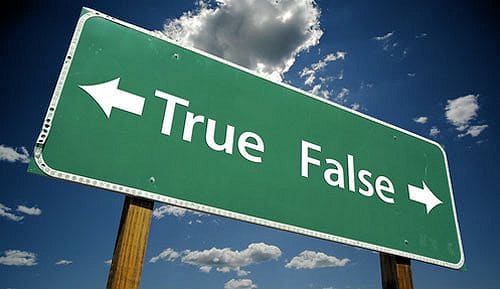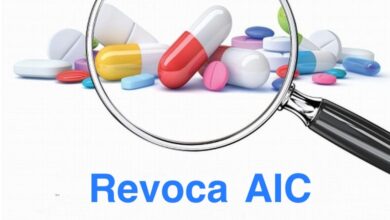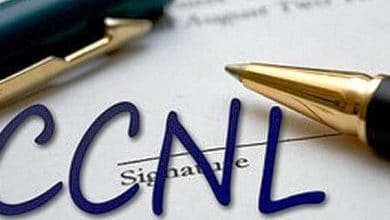
History is full of examples of first published and then withdrawn scientific papers. Here are the most curious examples
by Federico Baglioni – September 1, 2014 – WIRED
In 2013, one came out study which appeared to demonstrate a relationship between narcolepsy and the H1N1 virus vaccine. Recently, however, the article was withdrawn because the authors themselves could not reproduce the experiment. A hole in the water that adds to a long list of scientific discoveries and theories that have since been retracted. Sometimes substantial evidence is lacking, other times it is individual scientists or the entire scientific community who, dazzled and enthralled by a theory, become attached to it, falling into the so-called pathological science. However, there are cases of bad science, where researchers or outright charlatans falsify or invent data to support revolutionary theories. Here are some of the more curious examples.
Blondlot's N-rays
In 1903, the French physicist Blondlot claimed to have discovered a new type of radiation: the N rays. The existence of these rays was supported by numerous other colleagues, but a year later, the scientific community realized that it had been a blunder. Blondlot, on the other hand, died blindly believing in his theories.
The ether and the propagation of light
If light is a wave, in what medium does it travel? To answer this question, many 19th century physicists hypothesized the existence ofluminiferous ether, an invisible medium present throughout the universe. For decades the theory was accepted with absolute certainty, until it was denied in 1887 by the physicists Michelson and Morley.
The discovery of anomalous water
In 1962, the physicist Fedjakin said that he managed to get a water abnormal, with unique properties. Science I call her "Poliwater”, thinking it could be a polymeric form of water. In 1970 the cold shower (it is appropriate to say): the poliacqua was nothing but contaminated water.
The mirage of cold nuclear fusion
At a conference in 1989 two researchers, Fleischmann and Pons, announced that they had succeeded in obtaining nuclear fusion in a simple glass container cold. The study it was received with great excitement, but the story did not last long: a few months later the results were judged to be groundless. And cold fusion is still a mirage today.
Schön and molecular electric circuits
The young physicist Schön between 2000 and 2001 was the author of some articles suggesting an electronic revolution: electric circuits formed not by wires, but by molecular chains. Some suspicious graphics prompted Stanford University to open a commission. Although the physicist tried to defend himself, the outcome was merciless: out of 77 publications, 24 had probably been manipulated and 16 were definitely fraudulent.
Lysenko and anti-Darwinian genetics
The agronomist Lysenko was a critic of Darwin's and Mendel's genetics and believed that acquired traits could be passed on by inheritance. Its genetics, close to lamarckismand call miciurinism, was openly supported by the Stalinist regime in 1935. Becoming the official biology of the Soviet Union, it caused a catastrophe for agricultural production. Only in 1965 the Academy of Sciences considered the miciurinism an unfounded theory.
Sudbø's Cancer Studies
In October 2005 the doctor John Sudbø published an article on lancet which demonstrated how NSAIDs (non-steroidal anti-inflammatory drugs) caused an increase in cardiovascular disease, forcing us to rethink the prolonged use of such drugs. A special commission of inquiry verified just over six months later that all the data (and many of its publications) were completely invented.
Nikola Tesla and the superweapon
Nikola Tesla in 1937 wrote a treatise where he claimed to have understood how to produce beams of high-energy charged particles. An innovative and deadly weapon called death ray which, it is said, it was Tesla himself who presented to various governments. There is no evidence of the realization (or even the feasibility) of this invention, which appears to be one real hoax.
The proof of homeopathy
In 1988 the doctor Benveniste published on natures a study according to which water, thanks to particular structural modifications, had a memory. The clamor was too much and it was the magazine itself that appointed an investigative commission. Despite numerous failed attempts to reproduce the experiment, the memory of water is still remembered as a scientific demonstration of homeopathy.
Japanese studies on RNA
Between 1998 and 2004, chemistry professor Taira published about ten articles on theRNA interference, which they aroused numerous criticisms for the impossibility of reproducing the experiments and it was discovered that neither the samples nor much of the raw data requested by the commission of inquiry were available. According to the University of Tokyo those experiments were never performed.
The half-hoax of nail polish that changes color to protect you from rape
09/01/2014 – by Valentina Spotti – Newspapertyism
 Four American students invented it and the news has gone viral these days, but…
Four American students invented it and the news has gone viral these days, but…
A special nail polish that warns the wearer of a possible rape attempt that could take place shortly thereafter. The news has spread rapidly on the web in recent days and has gone viral, garnering the approval of women and girls from all over the world. But what has already been defined as a very efficient danti-violence deviceUnfortunately, it would not work as it promises. At least not yet.
«JUST A FINGER IN YOUR DRINK» – These are the facts: in the last days of August the news of four students from the North Carolina State University, inventors Undercover Colors, a nail polish that would allow women to check the contents of their glass, to verify that it does not contain one of the so-called “rape drugs”. The invention takes its cue from countless news stories of recent years, which have seen young women raped after being stunned with powerful drugs or narcotic substances mixed without their knowledge in the drink that had been offered to them while they were at a party or during an appointment. Hence the idea of creating a “revealing” nail polish, capable of change color if brought into contact with these substances, simply by inserting the tip of a finger into the glass: a few seconds and, if the enamel changes tone, it is better to be on the safe side and notify the authorities.
FALSE POSITIVES – Unfortunately, many forgot to point out that this nail polish would still be in an experimental stage: in the test phase, in fact, Undercover Colors would have returned as a result several false positives – that is, it would have signaled the presence of substances in the drink even when there was none – and, above all, it would only work with a limited number of “rape drugs”, too few to be able to cover the whole range of substances, from Rohypnol to Xanax passing through the GHB, and which are usually used to stun potential victims. This detail, points out Caitlin Dewey in the Washington Post, makes anti-rape nail polish «an interesting journalistic headline, but a much less useful tool than it might seem».
«GOOD INTENTION, BUT…» – It is said, however, that over time the invention can evolve and be refined, managing to really identify the presence of drugs in the glass. «We wanted to focus on something that could constitute an element of prevention – A. had said a few months agonkesh Madan, one of the four students who made Undercover Colors – We have all been close to someone who has had a terrible experience of this type and we began to focus on a way to prevent this type of crime ». However, not everyone seems to agree with this point of view which, in a certain sense, could go against a rape victim: "It is a product born of good intentions - wrote the activist Tara Culp -Ressler on ThinkProgress – But any student who does not use this polish and who suffers violence could be reproached for not using it».





